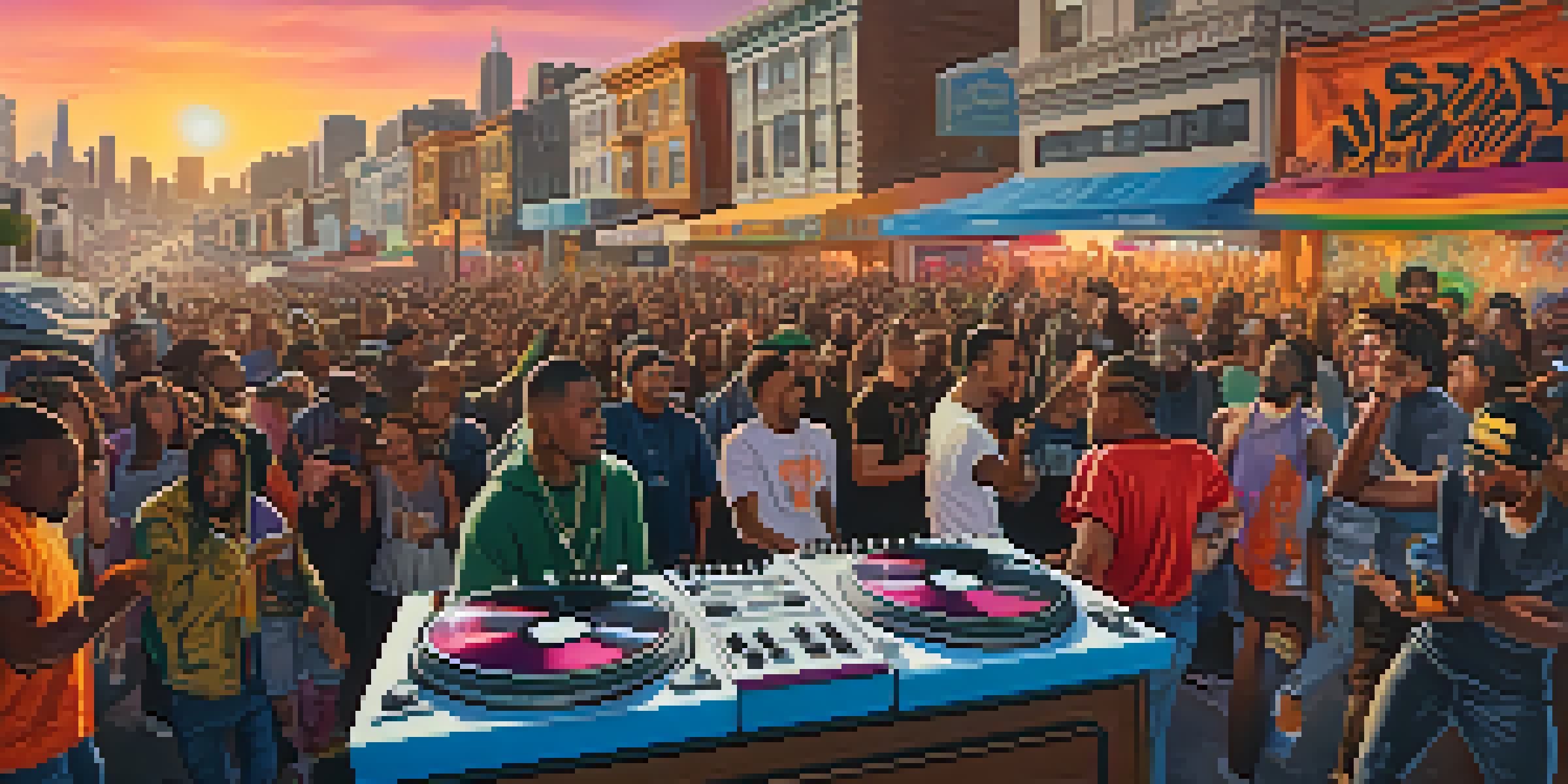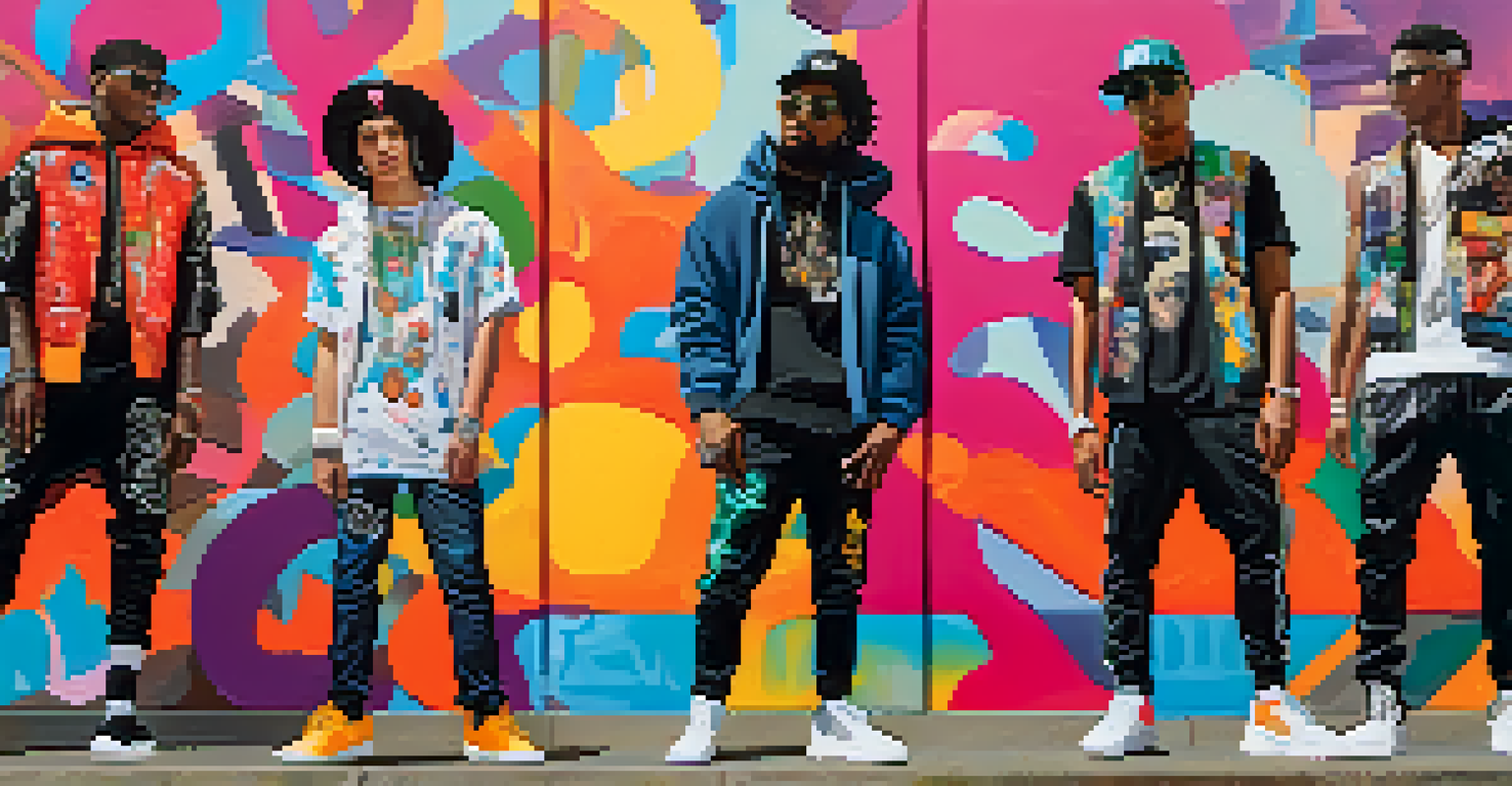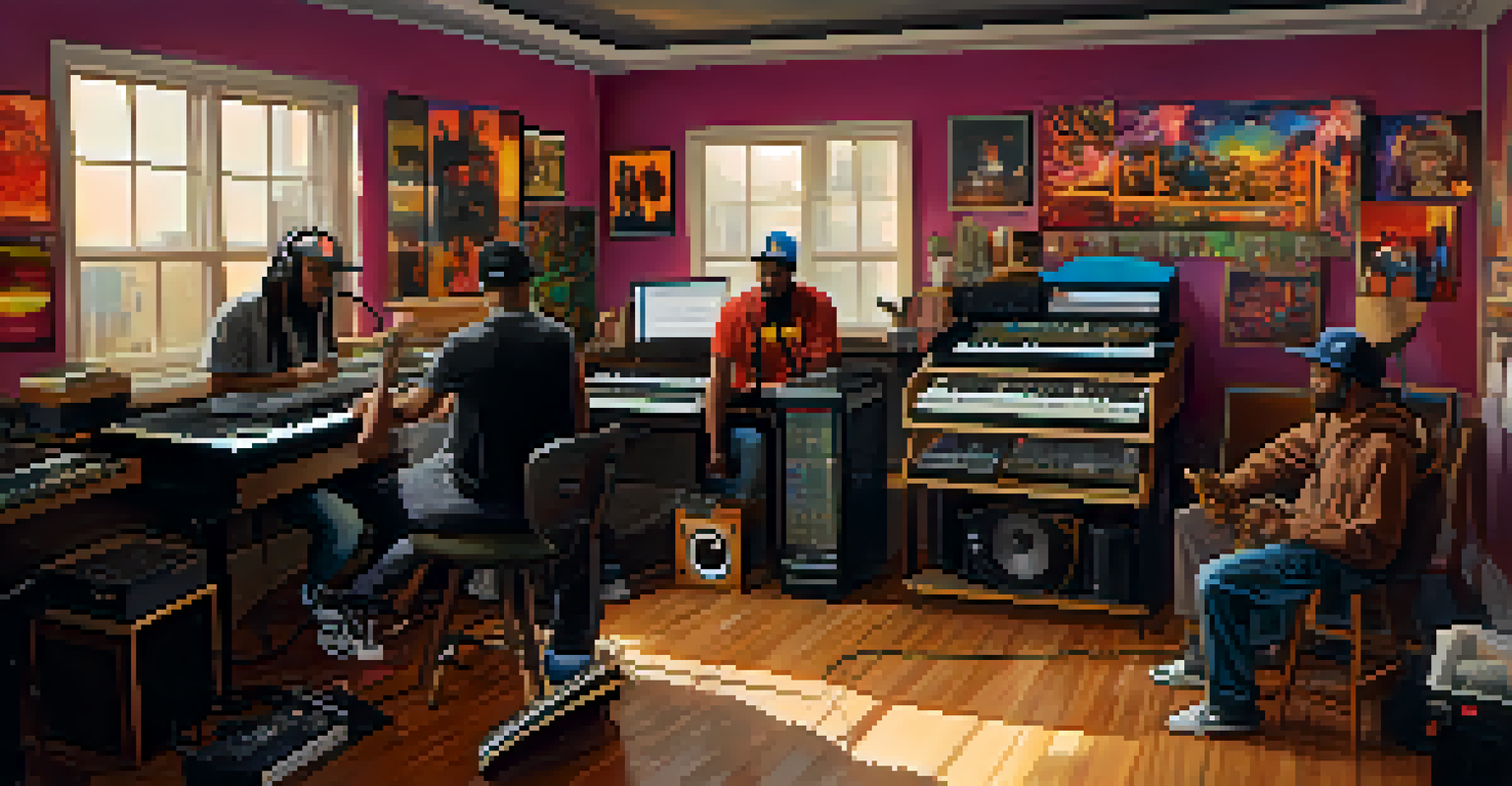San Francisco's Contribution to the Hip-Hop Scene

The Roots of Hip-Hop in the Bay Area
San Francisco's connection to hip-hop began in the late 1970s and early 1980s, when the genre was still in its infancy. Artists merged their unique cultural backgrounds with hip-hop, creating a distinct sound and style that resonated with local communities. The city's rich diversity played a crucial role in shaping the early hip-hop movement here.
Hip-hop is not just music, it's a movement, and in the Bay Area, it reflects our culture, struggles, and dreams.
Local venues like the Fillmore and smaller clubs became breeding grounds for budding talent. The Bay Area's own pioneering artists, such as Too Short and Digital Underground, started to gain traction, setting the stage for a flourishing scene. Their innovative approaches to storytelling and rhythm laid the groundwork for future artists in the region.
This period marked the beginning of what would become a vibrant and influential hip-hop culture in San Francisco. The blend of street culture, music, and performance art created a unique atmosphere that encouraged creativity and collaboration among artists.
The Evolution of Bay Area Hip-Hop
As the 1990s rolled in, San Francisco's hip-hop scene began to evolve dramatically. The emergence of new genres, such as hyphy, reflected the city's lively spirit and penchant for innovation. Hyphy, characterized by its energetic beats and party-centric lyrics, became a defining sound of the Bay Area.

Artists like E-40 and Keak Da Sneak led this charge, infusing their tracks with local slang and references that resonated with the community. Their work not only popularized the hyphy movement but also highlighted the region’s unique cultural identity within the larger hip-hop landscape. This evolution was pivotal in diversifying hip-hop's sound and narrative.
Bay Area's Unique Hip-Hop Roots
San Francisco's diverse cultural landscape significantly shaped the early hip-hop movement, fostering a distinct sound that resonated with local communities.
The impact of hyphy extended beyond music; it influenced fashion, dance, and even the way fans engaged with the genre. This vibrant era showcased how San Francisco embraced creativity and self-expression, setting the stage for future generations.
The Role of Technology and Innovation
San Francisco's reputation as a tech hub has also significantly impacted its hip-hop scene. The rise of digital music platforms and social media allowed artists to share their work more broadly than ever before. This access democratized the music industry, enabling independent artists to gain recognition without relying solely on traditional record labels.
The future of hip-hop is in the hands of those who dare to innovate and inspire.
With tools like SoundCloud and YouTube, local artists could reach global audiences, which helped cultivate a diverse following. This shift not only amplified the voices of established artists but also provided a platform for emerging talent, resulting in a rich tapestry of styles and sounds within the hip-hop community.
Moreover, collaborations between tech innovators and musicians further fueled this growth. The fusion of technology and artistry created new avenues for creativity and expression, showcasing San Francisco as a pioneer in the intersection of hip-hop and tech.
Influential Artists from San Francisco
San Francisco has produced a plethora of influential hip-hop artists who have left indelible marks on the genre. From pioneers like Too Short to contemporary stars such as G-Eazy, the city's talent pool is impressive. Each artist brings their unique perspective, contributing to the ever-evolving narrative of hip-hop.
Too Short, for instance, is known for his explicit lyrics and storytelling that reflect the realities of urban life. His influence can be seen in countless artists who followed, showcasing the importance of authenticity in hip-hop. Meanwhile, G-Eazy's blend of pop and hip-hop has broadened the genre's appeal, attracting a diverse fan base.
Hyphy: A Defining Bay Area Sound
The emergence of the hyphy movement in the 1990s showcased the Bay Area's innovative spirit, blending energetic beats with local slang and cultural references.
These artists not only represent San Francisco but also serve as ambassadors of hip-hop culture. Their success stories inspire aspiring musicians and demonstrate the power of local roots in a globalized music industry.
Community and Collaboration in Hip-Hop
One of the defining features of the San Francisco hip-hop scene is its strong sense of community and collaboration. Artists often come together to share ideas, collaborate on projects, and support one another. This camaraderie fosters an environment where creativity can flourish, and new sounds can emerge.
Collectives like The Getback and Hieroglyphics have played vital roles in nurturing local talent and promoting collaboration among artists. These groups emphasize the importance of unity in the hip-hop community, encouraging members to uplift one another and create together.
This collaborative spirit not only strengthens the local scene but also enhances the quality of the music produced. When artists pool their talents and resources, they create a rich tapestry of sound that reflects the diverse cultural influences present in San Francisco.
San Francisco's Impact on Hip-Hop Fashion
Just as music has evolved, so has hip-hop fashion, with San Francisco playing a significant role in shaping trends. The city is known for its eclectic style, which often blends streetwear with high fashion. This unique aesthetic has influenced not just local artists but also hip-hop culture globally.
Local brands and designers have emerged, creating clothing that reflects the vibrant culture and creativity of the Bay Area. Artists often showcase these styles in their music videos and performances, further cementing the connection between hip-hop and fashion.
Community Fuels Hip-Hop Collaboration
A strong sense of community and collaboration among artists in San Francisco has led to a flourishing hip-hop scene that embraces creativity and diversity.
As a result, San Francisco has become a trendsetter in the hip-hop fashion scene, inspiring fans and artists alike to express their individuality through their attire. This dynamic relationship between music and fashion continues to evolve, showcasing the city's ongoing influence.
The Future of San Francisco Hip-Hop
Looking ahead, the future of hip-hop in San Francisco appears bright and full of potential. With emerging artists continually pushing boundaries and exploring new sounds, the city's hip-hop scene is poised for further growth. As technology continues to evolve, so will the ways in which artists create and share their music.
Additionally, the ongoing support from local communities and venues ensures that new talent can thrive. Initiatives aimed at nurturing young artists and fostering collaboration will play a crucial role in shaping the next generation of hip-hop in San Francisco.

Ultimately, San Francisco's rich history and commitment to innovation will continue to influence hip-hop culture for years to come. As artists draw inspiration from their surroundings and each other, the Bay Area will undoubtedly remain a vital hub for hip-hop creativity.